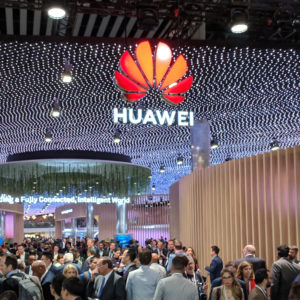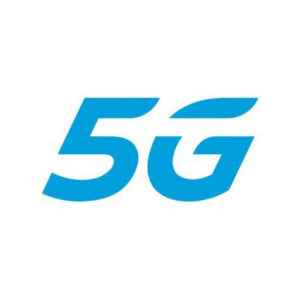Weekly News: Huawei sales touch $121 bn in 2019
January 6, 2020
1. Telecomlead: Huawei sales touch $121 bn in 2019, anticipates tough 2020
2. RCR Wireless: AT&T low-band 5G network expands into new markets
3. India Times: DoT meets telecom operators, vendors to discuss 5G trials
4. Telecoms: Malaysia outlines complicated plan for 5G spectrum allocation
5. Broadband World News: US Rural Broadband Accelerates in 2020

Telecomlead: Huawei sales touch $121 bn in 2019, anticipates tough 2020
Huawei estimates that its sales revenue will be around 850 billion Chinese yuan or US$121 billion in 2019, an increase of roughly 18 percent, despite facing challenges globally in the wake of security allegations.
More than 700 cities and 228 Fortune Global 500 companies have selected Huawei as their digital transformation partner.
Huawei shipped 240 million smartphones in 2019. Huawei made further progress in developing the ecosystem for an intelligent consumer experience across all scenarios and devices, including personal computers, tablets, wearables, and smart screens.
Read more.
RCR Wireless: AT&T low-band 5G network expands into new markets


AT&T has reportedly pledged to provide a nationwide low-band 5G network by the first half of 2020.
As 2020 begins, AT&T can officially lay claim to 20 cities where its low-band 5G network is available. While the carrier has had a 5G network for close to a year now, the service was previously made available only via hot spots exclusively to business clients. However, AT&T’s initial consumer launch took place in mid-December and included 10 cities, and recently, the carrier added another 10 cities to the rapidly growing list.
Unlike AT&T’s 5G network for business clients, which uses millimeter wave frequencies to provide faster speeds, the commercial variety is low-band 5G and uses a portion of the carrier’s 850 MHz spectrum. Low-band 5G will rely on the same airwaves that LTE has used, and while it won’t quite hit the super-fast speeds made possible with large swathes of mmWave spectrum, it will have better penetration and coverage characteristics.
AT&T is the fourth, and last, of the major carriers to begin offering 5G to consumers. Verizon’s 5G mmWave network, first launched in April, now includes 31 cities and 15 NFLS stadiums. T-Mobile turned on its low-band 5G for 200 million people nationwide in early December. Sprint, meanwhile, has forged ahead with nine cities under its 5G belt.
Read more.
India Times: DoT meets telecom operators, vendors to discuss 5G trials
New Delhi: A day after the government said all operators will be allowed to participate in the upcoming 5G trials, the Department of Telecom (DoT) held a meeting with various service providers and equipment vendors, including Huawei, to discuss the way forward. The meeting on Tuesday, chaired by Telecom Secretary Anshu Prakash, lasted for over an hour. An official with one of the telcos said that all operators attended the meeting.
The 5G trials are widely-expected to begin between January and March. Sources had recently said the government has received seven applications for 5G trials and added that all operators and vendors (including Nokia, Ericsson, Huawei, ZTE and Samsung) are keen to participate.
Read more.
Telecoms: Malaysia outlines complicated plan for 5G spectrum allocation

The Malaysian Government has released complicated plans to allocate spectrum ahead of 5G deployment in the country in an effort to ensure the greatest efficiencies.
Theoretically, the Malaysian Communications and Multimedia Commission (MCMC) has outlined a strategy which could bring significant benefit to the country, but there is certainly a risk this could go disastrously wrong. There are a lot of moving parts, new ideas and opportunity for abuse should the pieces not fall perfectly into place.
Starting at the top, after a consultation period, the MCMC has identified four spectrum bands for 5G services; 700 MHz, 3.5 GHz, 26 GHz and 28 GHz. This is not revolutionary, as these airwaves have been identified for 5G by other nations, but the allocation of these assets is the interesting element of this story.
Starting with the 700 MHz and 3.5 GHz spectrum bands. As opposed to going through an auction process, these licences will be assigned to a consortium formed by the various different players in the industry. With only 2×30 MHz blocks in the 700 MHz band and 100 MHz in 3.5 GHz, the consortium approach expects to make best use of the available spectrum and also intends to minimise CAPEX for infrastructure deployment across the country.
Read more.
Broadband World News: US Rural Broadband Accelerates in 2020
The number of homes passed by fiber increased by 17% in 2019, the same rate as 2018, according to the latest study by RVA Associates. Much of that has been AT&T’s 14-million home build-out, which is now largely finished. Small providers represented 25% of new homes passed and 41% of capital expenditures. That represents 6% growth in new passings from 2018.
Looking forward to 2020, a few new things start boosting rural broadband projects.
In September 2019, the FCC granted a total of $1.49 billion for rural broadband projects in the second phase of the Connect America Fund (CAF-II) reverse auction. All that money translates to shovels in the ground in 2020. Indeed, 53% of newly passed homes and small businesses will be able to get broadband tiers of 100/100 Mbit/s or more, with 19% able to buy gigabit service. Most of that will be served with FTTH, or HFC where CAF subsidizes MSO line extensions.
Read more.
Don’t miss the Telecom & Wireless News, Check here.
